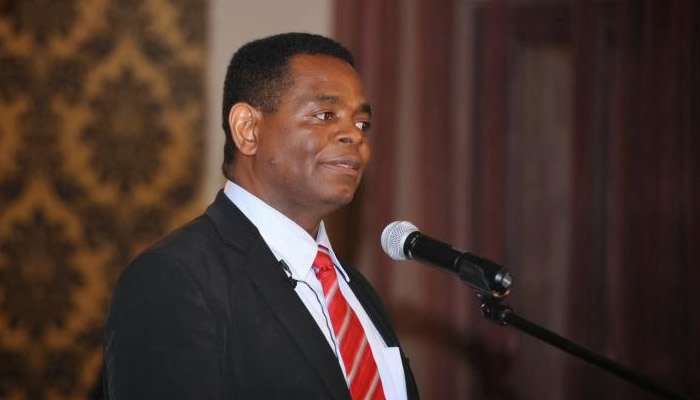By Tendai Kamhungira
HARARE – The Shabanie and Mashaba Mines (SMM) saga has taken a new twist after Cleopas Sanangura, a former finance manager of Southern Asbestos Sales (Private) Limited (Sas), wrote a letter of complaint claiming a court order sealing the company’s owner Mutumwa Mawere’s fate was void.

Sanangura was a key witness in the trial held in 2012 to resolve a dispute between the Zimbabwean government and Mawere.
The proceedings were carried out through Afaras Gwaradzimba, who was appointed to be SMM’s administrator after Mawere’s specification.
The aspects preceding the case were a cession agreement that was entered into between Sas and SMM, which Sanangura contented, as fraudulent, claiming that it was used to obtain a court order in May 2004. The cession agreement was reportedly in turn used to enable Sas to pay an amount of R18 million to Petter Trading (Private) Limited (Petter).
SMM, Petter and Sas, prior to the placement of SMM under state reconstruction were companies ultimately controlled by Mawere.
In the letter of complaint dated January 26, 2015, and addressed to South African Police Services (Saps), Sanangura claims that the judgment in the matter presided by Nigel Willis, now a Supreme Court Judge in South Africa, was tainted by fraud and therefore void.
Sanangura, who is the group chief executive officer of Dawn Holdings (Private) Limited, lodged a complaint with Saps under Case Number 740/1/2015 against former Justice minister, now Finance minister Patrick Chinamasa, ex-Reserve Bank of Zimbabwe governor Gideon Gono among others.
He alleged that the parties knowingly orchestrated a scheme to obtain judgments in South Africa on fabricated evidence and in so doing obstructed the course of justice in a corrupt and fraudulent manner.
It was the Zimbabwean government’s version that Mawere had orchestrated a scheme to cause a cession agreement to be signed and used to prevent funds due to SMM from being remitted by Sas. However, according to Sanangura, who signed the cession agreement, this version was fabricated and designed to justify the takeover of SMM.
Sanangura maintains that there was no intention to divert any funds but on the contrary, it was the Zimbabwean government that had prevented SMM from paying what was due to Petter that caused Sas, SMM and Petter to approach the South African courts for relief in order to secure the indebtedness of Petter and in turn, SMM.
In the papers submitted by Sanangura in support of his complaint, SMM’s officials confirmed that SMM was indebted to Petter at the material time in the amount of at least R19,6 million, which is far in excess of what Sas had already advanced to Petter prior to the signing of the cession agreement.
At the core of Sanangura’s dispute is that the judgment does not correctly reflect his evidence during trial.
He makes the point that contrary to the finding of Willis that he had accepted the Zimbabwean government’s version that the R18 million in dispute was paid pursuant to the cession court order granted by Van Oosten, Sanangura said the said amount was advanced to Petter by Sas for the sole benefit of the mines that depended on Petter for materials and consumables.
He also makes the point in the complaint that Gono, the driving mind behind the allegations of externalisation in respect of the cession scheme knew that no funds were paid by Sas as a consequence of the court order. Daily News






